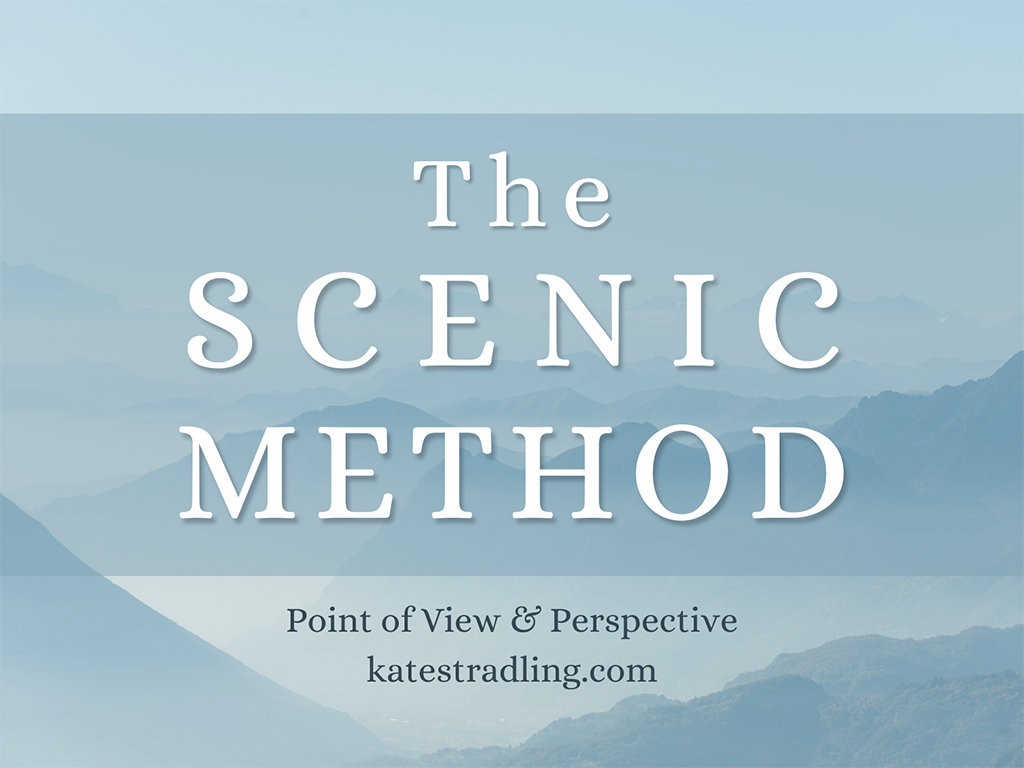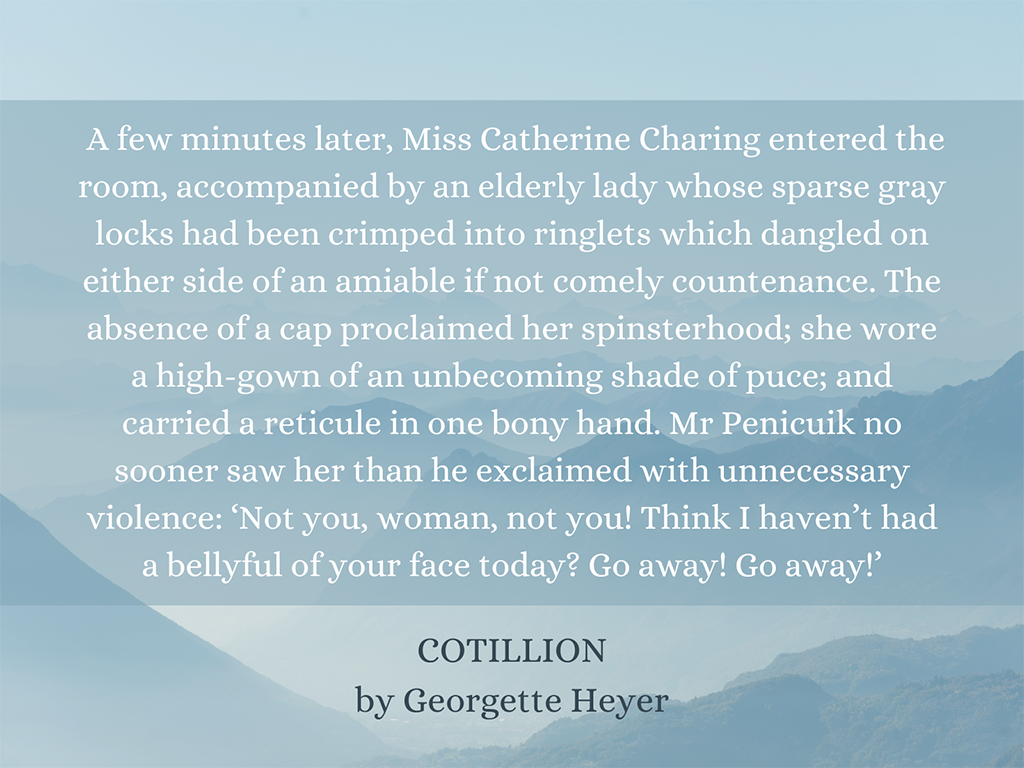
The Scenic Method arose out of a dramatic tradition, championed to a great degree by Henry James, who wanted to write plays but wrote novels instead.
As its name implies, this technique presents the progression of a story scene by scene, without leaning into summaries. Picture, if you will, a play, with its stage notes that block characters and setting before any action or dialogue can occur. Then convert that into prose.
A Basic Formula
Scenes in the Scenic Method are detailed, orderly, and self-explanatory. They follow a set form:
- Begin with a description of the setting and characters present, including those characters’ physical and mental states.
- Proceed with dialogue and action to move the plot forward.
- End on a climax to propel the Reader to the next scene or chapter.
- Lather, rinse, repeat.
The quintessential model for the Scenic Method is THE PORTRAIT OF A LADY by Henry James, which embodies the above formula. Because a blog-sized excerpt would not illustrate the full effect, I’ll link you to Chapter Two for your perusal.
Note the block of description at the start, the dialogue punctuated with characters’ actions throughout, and the punchy ending. The Scenic Method creates a well-organized structure for the story to unfold.
However, because its scenes always begin with description, they lack the instant Reader engagement that comes from starting with dialogue or action instead. This makes for a non-dynamic narrative, which is why this method has fallen out of favor in modern literary trends.
So why bother learning it?
First
Regardless of trends, writers should always know their options. Description, exposition, dialogue, and action each serve a distinct purpose in storytelling. Thus, although writing a whole book according to the Scenic Method could be passé, individual chapters might benefit.
After all, launching straight into dialogue or physical encounters with no visual context scene after scene after scene can make an exhausting read. Too much action with not enough imagery will tax a Reader’s mind.
In contrast, the Scenic Method allows moments of stillness, a chance to breathe the air of the book world, a well-orchestrated pause before continuing.
Second
For any story where the setting is also a character, the Scenic Method provides opportunity for that character introduction. It conveys a novel’s aesthetic and evokes desired imagery to prevent the Reader from entering the story blind.
It can also serve well for subtle comedic or dramatic effect, particularly when the players within a setting don’t match their surroundings, or when a pair of settings juxtapose one another. In Georgette Heyer’s COTILLION, the opening two chapters occur in a stately manor house whose owner is too tight-fisted to offer more than scant hospitality to three summoned guests: worn and dated furnishings, an unappetizing meal, and so forth.
The third chapter shifts to a roadside hostelry where another guest, remembering the stinginess of his host, pauses for a lavish meal before completing his journey. The pair of settings and the characters who occupy them contrast beautifully. So too, does the appearance of the female protagonist, who enters the manor setting with practiced decorum, then subsequently descends upon the hostelry in a disheveled wrath.
And through it all, the Scenic Method provides excellent scaffolding for the mischief that ensues.

Third
Because of its organized structure, this method can provide an excellent first-draft template. It’s an orderly, easy-to-follow means of getting words on the page, of detailing who is present and how their surroundings appear.
If you struggle with scene-blocking, try plugging everything you know into the Scenic Method. You can integrate those details more naturally in subsequent drafts.
- What strengths do you find in this point-of-view technique? What weaknesses?
- Do you enjoy books told in the Scenic Method? Why or why not?
Up next: The Panoramic Method
Previous: Limited Omniscient Narration
Index Page: Point of View
I so enjoy Georgette Heyer and was tickled to see her as one of your example texts. I have been exploring your blog, hunting to see if there will be a sequel to Namesake, which I loved! I see that you do have two planned, and was wondering if there is any update to when they might come out?
Thank you for your comment/inquiry. I’ve shelved the Namesake sequels for now. They weren’t working to my satisfaction, and I’d rather not undermine the original with mediocre follow-ups.
Comments are closed.